Piano Tuner in Inverclyde, Renfrewshire, Glasgow, the west of Scotland and beyond.
Haydn Sonata 35 in C, Allegro.mp3
This page contains information about technical books covering tuning, repair, design, regulation and other aspects. It is not an exhaustive bibliography, just comments on some works on my bookshelf. Links in blue will take you to the product page on Amazon or other sources. Some titles are out of print and only available secondhand.
As an Amazon Associate I earn from any qualifying purchases made via links.
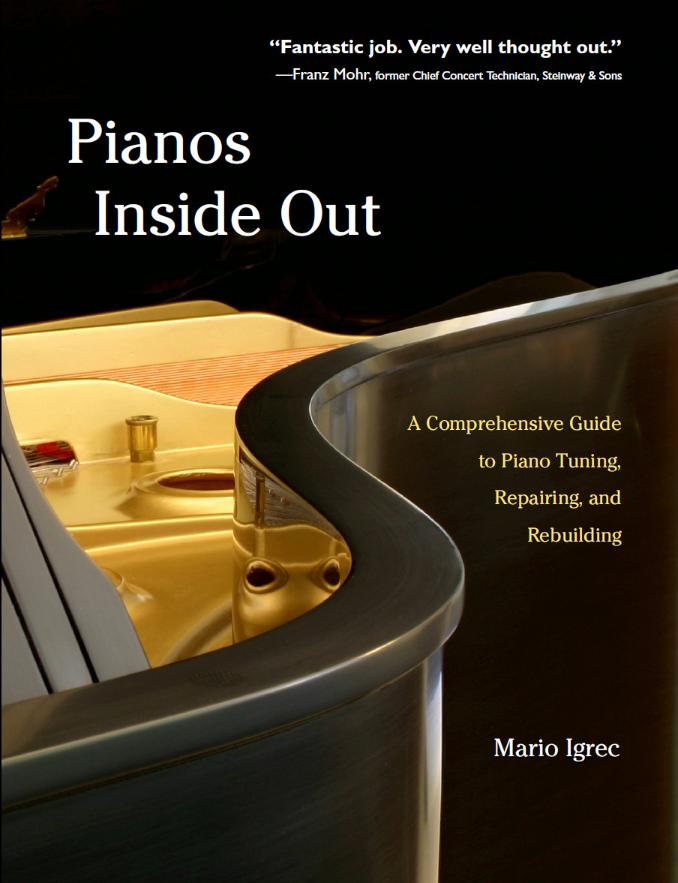
Pianos Inside Out Mario Igrec In Tune Press 2013
This is the best book ever produced on piano technology. And you will be thrilled to know, gentle reader, that this very website which you are sapiently perusing, is listed as a resource in the Bibliography of this splendid new textbook. This is not the cheapest book, but is certainly the most comprehensive and up to date.
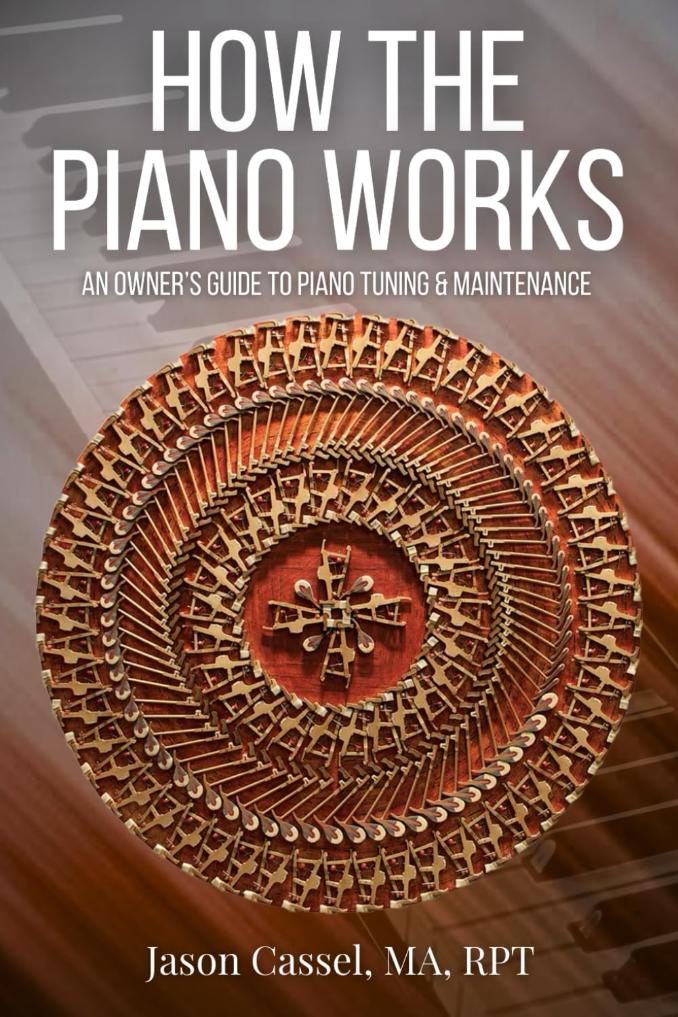
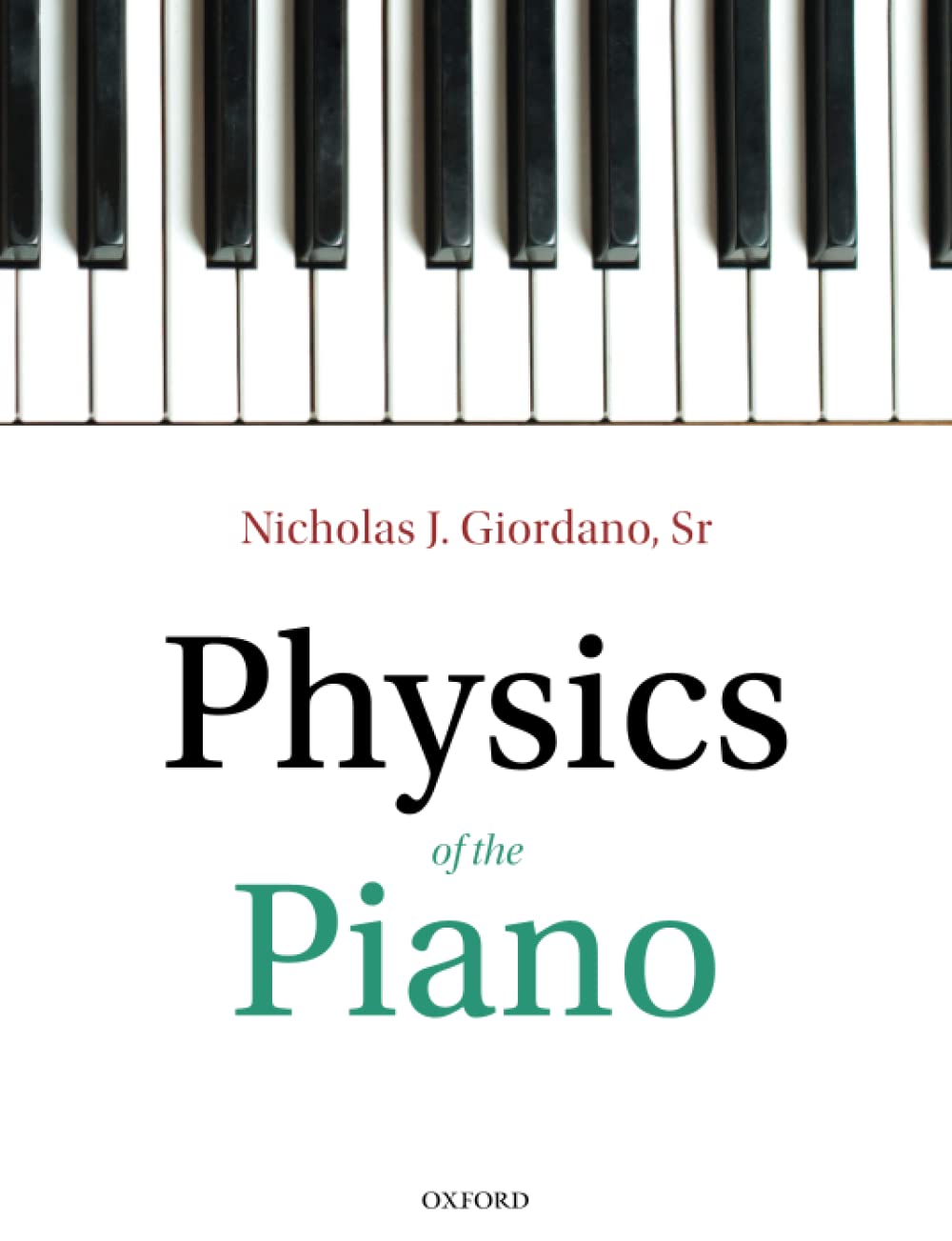
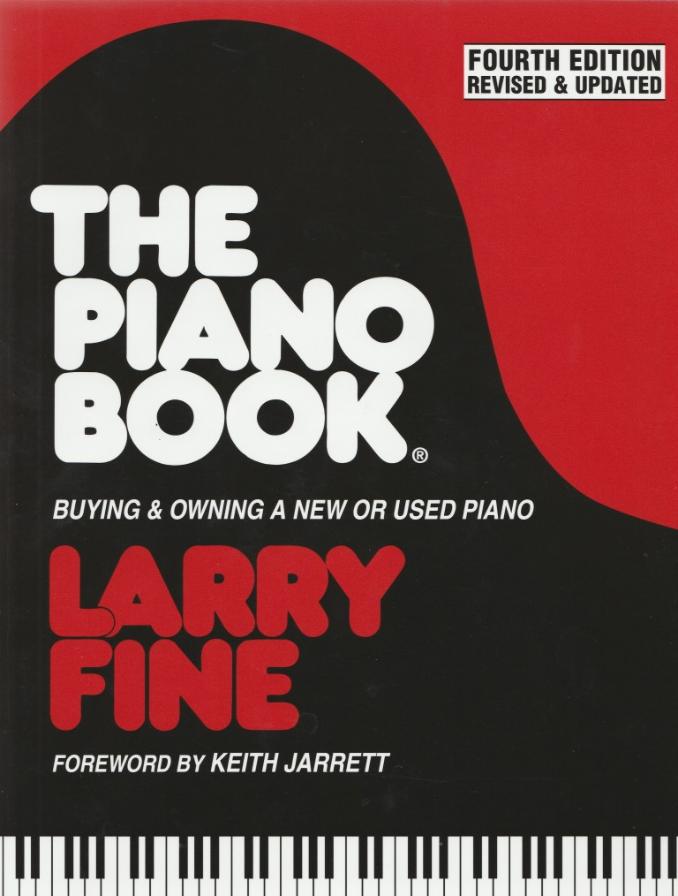
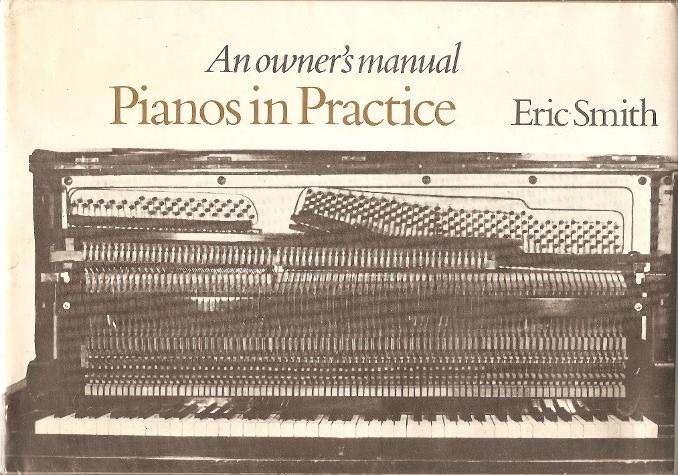
Pianos In Practice Eric Smith, Scolar Press Ltd 1978
This slim 1978 book was the first I ever obtained on how pianos work. It's out of print but you might find a secondhand copy. It has good descriptions of how upright and grand piano actions work. Having line drawings side by side with photographs showing each stage of a key being played is helpful (see example below). Smith later published another book, Pianos; Care & Restoration.
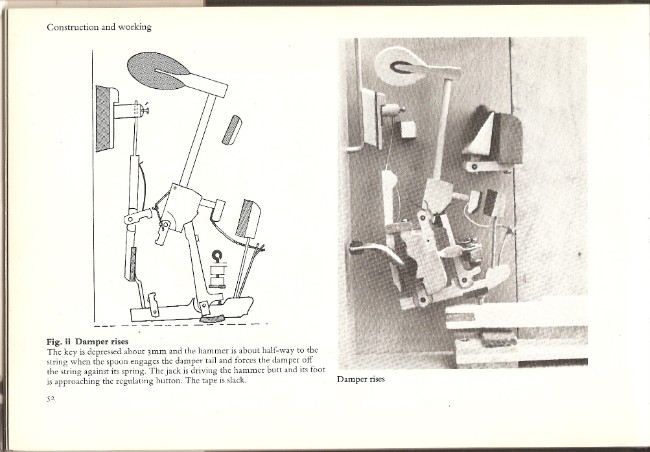
Line drawing with accompanying photo, in Pianos in Practice.
Second-hand only
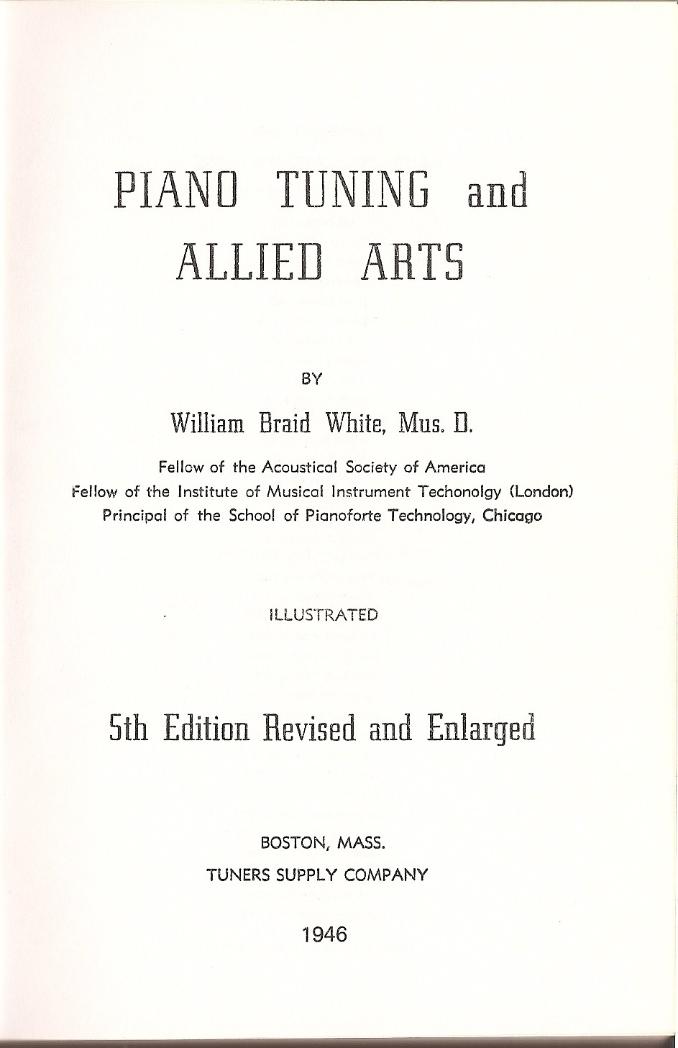
Piano Tuning and Allied Arts, William Braid White. Tuners Supply Co, Boston 1946
This 1946 revision of an American book originally published in 1917 was for years considered a standard text on piano tuning and repair. Actually it has very little on repair. Concepts and methods have moved on since 1946 and this is no longer the best place to start. The writing style is rather of its time, although I think the usage "an unison" must have grated even in 1946. I've shown the frontispiece above rather than the front cover, which has no print.
Second-hand only
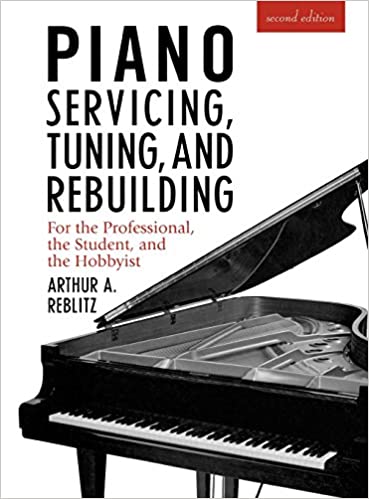
Piano Servicing, Tuning & Rebuilding. Reblitz, Vestal Press 1974
Arthur Reblitz's mid 1970s book was a huge leap forward from any previous piano technical book. It was the first to explain repairs in detail and with photographs. The explanations and tables setting out the theory of tuning are a model of clarity. This quickly became the standard text and remains a most valuable part of the literature; a very good place for anyone interested in piano technology to start. Other texts have since taken tuning and repairs to new levels of thought and description (see Pianos Inside Out, above), but Reblitz is still excellent. It's now on a second edition, 1997, and some have said that the clarity of some of the photos has suffered a little.
Piano Tuning, Servicing and Rebuilding
SEE 'STOP PRESS' ABOUT 3RD EDITION, BELOW:
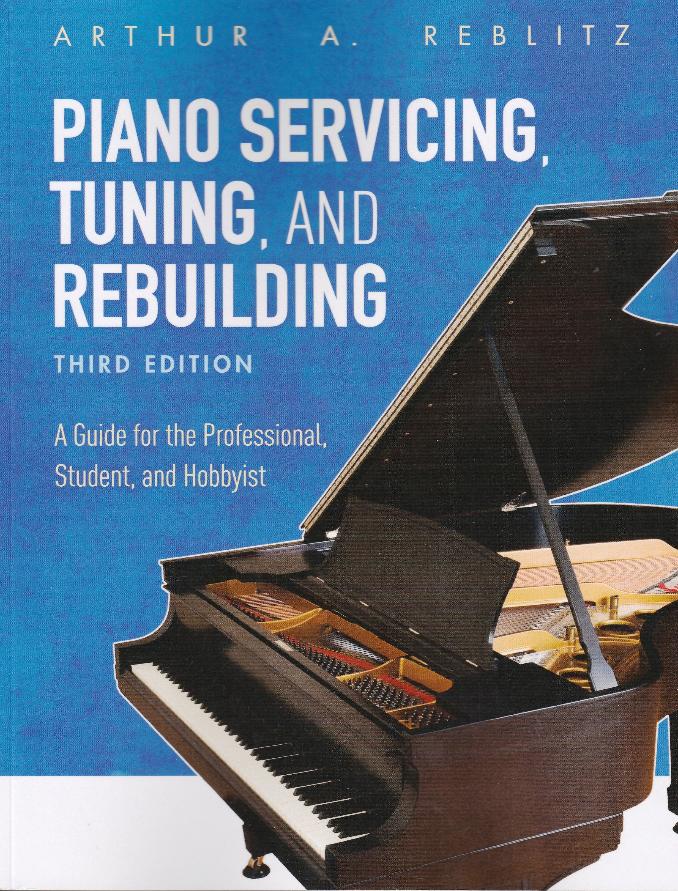
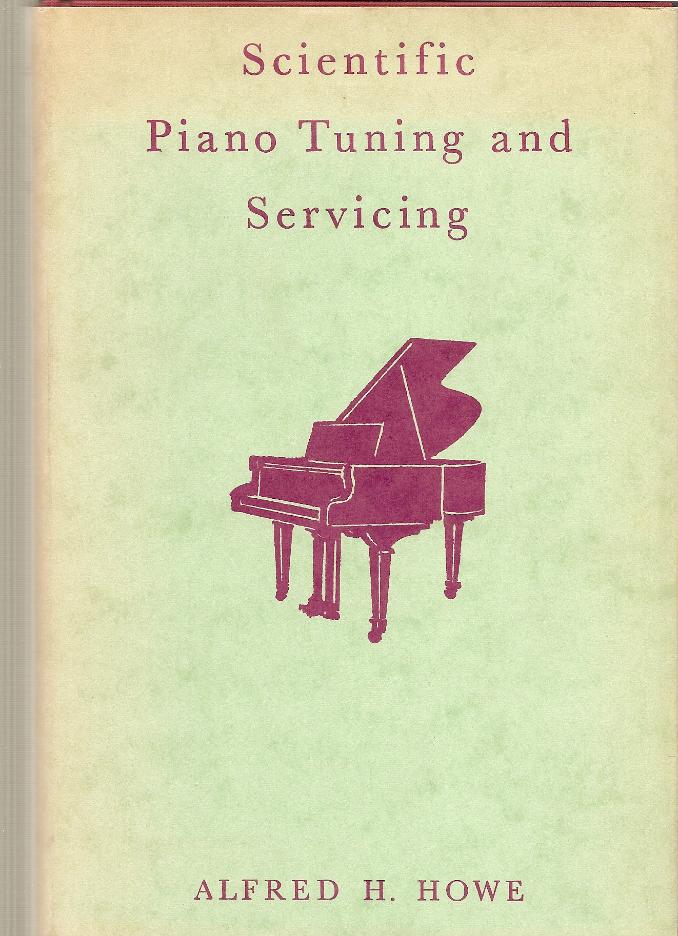
Scientific Piano Tuning & Servicing Howe, APSCO, 1941, last revised 1976
Howe's book dates from the same 1940s era as the revised edition of W. B. White, and is a worthy challenger to it. There is a nice approach to showing various schemes for setting the temperament octave, giving these in musical notation. Like White, there isn't too much on the repair side. Also like White, superseded by more modern texts. But still nice to have on the bookshelf.
Second-hand only.
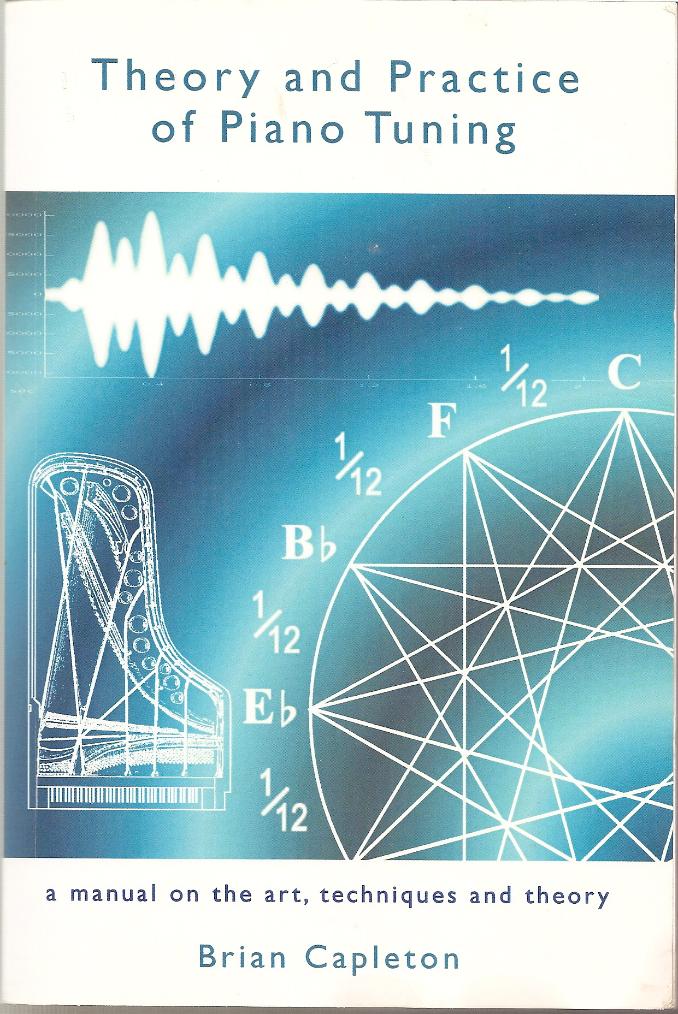
Theory and Practice of Piano Tuning Brian Capleton Amarilli Books 2007
Phew, this is no lightweight text! Thinking on piano tuning has developed in recent years. Older theory concepts have been shown not to be entirely adequate to explain and describe pianos, their string scales, and how tuners deal with them. This lengthy 2007 text approaches the philosophical in the depth of its discussion, and at 626 pages certainly offers detailed analysis. It wouldn't be the easiest starting point for someone coming new to pianos, but it's a welcome addition to the literature.
Theory and Practice of Piano Tuning
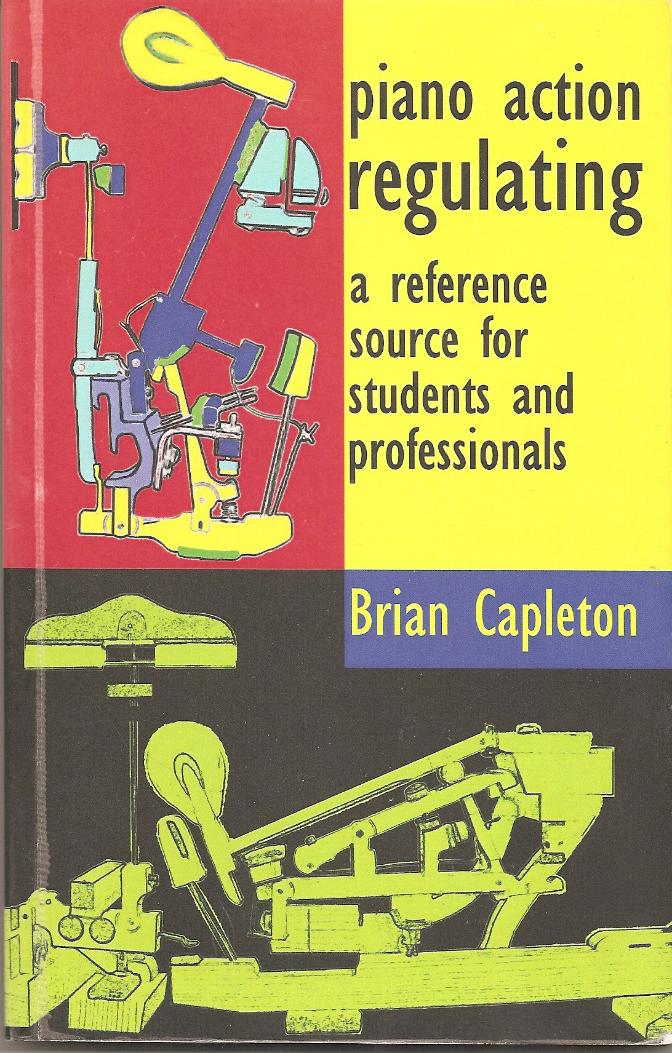
Piano Action Regulating Brian Capleton Amarilli Books 2007
This slim volume is a practical guide designed to cover the regulating knowledge needed for the former City & Guilds certificate. That Certificate is not offered by any training provider today but this is a very useful little book, clearly explained. This how-to book does not go deeply into theoretical design geometry considerations.
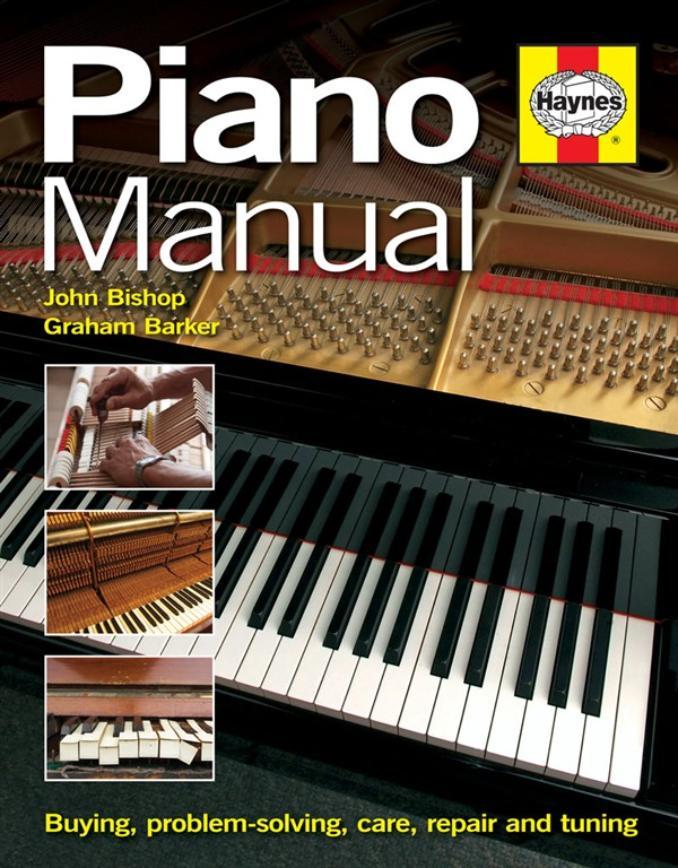
Haynes Piano Manual
Many of us are familiar with Haynes Car Manuals. In recent years, Haynes have branched out into other technical manuals covering, for example, household appliances. And now, the Haynes Piano Manual!
Piano technology books have always been a niche market, uneconomic to produce in colour. Black and white photos are OK, but it can sometimes be tricky to see parts clearly when everything is in shades of grey.
Haynes Manuals are aimed at a general consumer market. By producing a book that's useful for all piano owners, as well as those with a deeper technical interest, it has been possible to have full colour throughout - a tremendous boon!
John Bishop is a piano technician of some 40 years experience who also has a background as a University Lecturer (in an unrelated field). He and his writing colleague Graham Barker have produced a work that is copiously illustrated with colour photos and is accessibly and humorously written.
There are different methods for carrying out many piano tasks, and not everyone will do things in exactly the same ways as described here. But that's fine. This is a genuinely useful manual which I think should be in the hands of all who are at all interested in the workings of their piano. It would be especially good for music conservatory piano students.
Just as with the Haynes car Manuals, many tasks are described that most readers won't be intending to tackle, but the book is well worth having for general background information.
There is an unfortunate error in the labelling of some parts in a photo of the upright piano action, due to a proofreading oversight, and this will presumably be corrected in future print runs. A corrected version is available in this Blog about the manual.
Some in the trade were uncomplimentary about this book when it was published, but it isn't intended to be a comprehensive manual for training apprentices, and for the general market it's aimed at, I think it's excellent.
Currently second-hand only (January 2024)

The Anatomy of the Piano. Herbert Shead. Heckschers.
Full of useful piano information. Gives the UK names of parts and describes their functions. Many diagrams and illustrations:
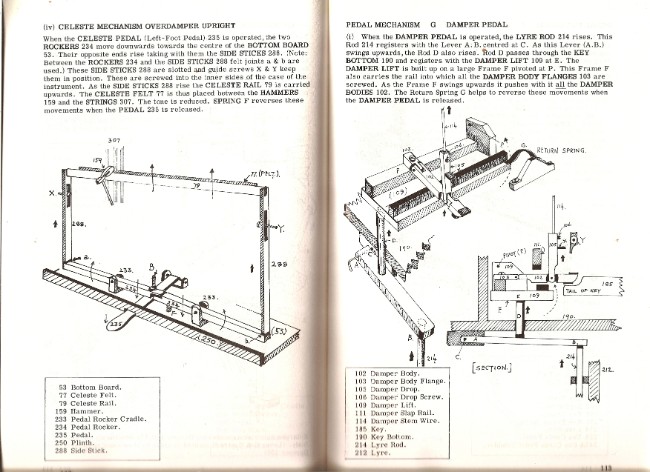
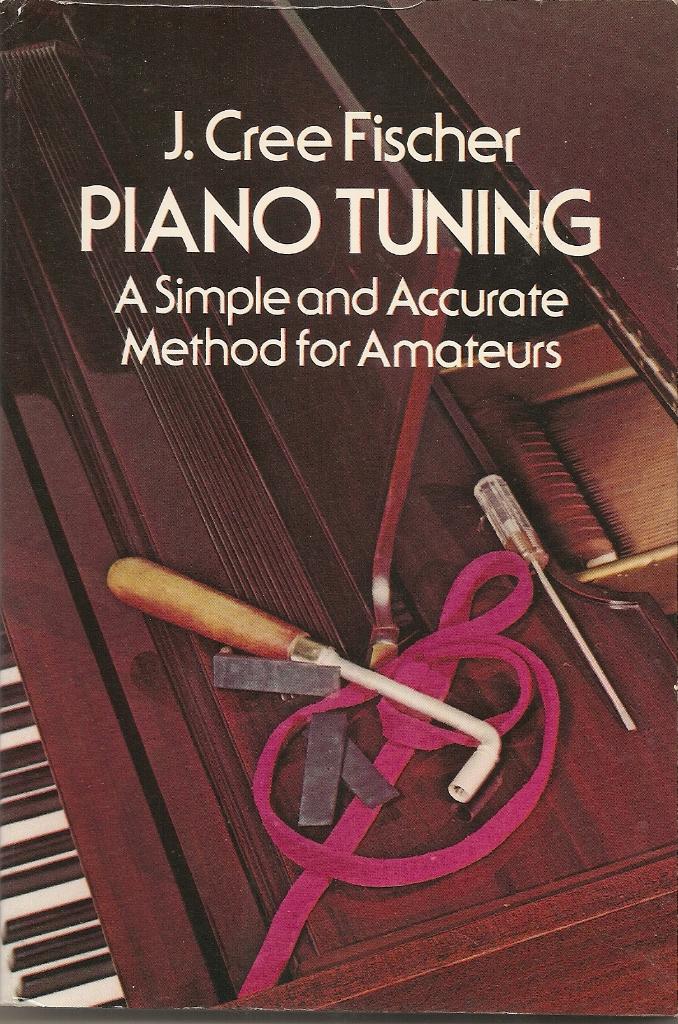
Piano Tuning, A Simple and Accurate Method for Amateurs J. Cree Fischer 1917
A simple and accurate method for amateurs? That's a larf! Tuning a piano is never simple and arguably never accurate, even for professionals. This is a facsimile reprint of Fischer's 1917 book, produced presumably because modern print technology makes it easy and it's out of copyright. It has a place on the bookshelf as a historical text. It might help a beginner to think about the process, but at 108 years old it's really not nowadays the best starting point.
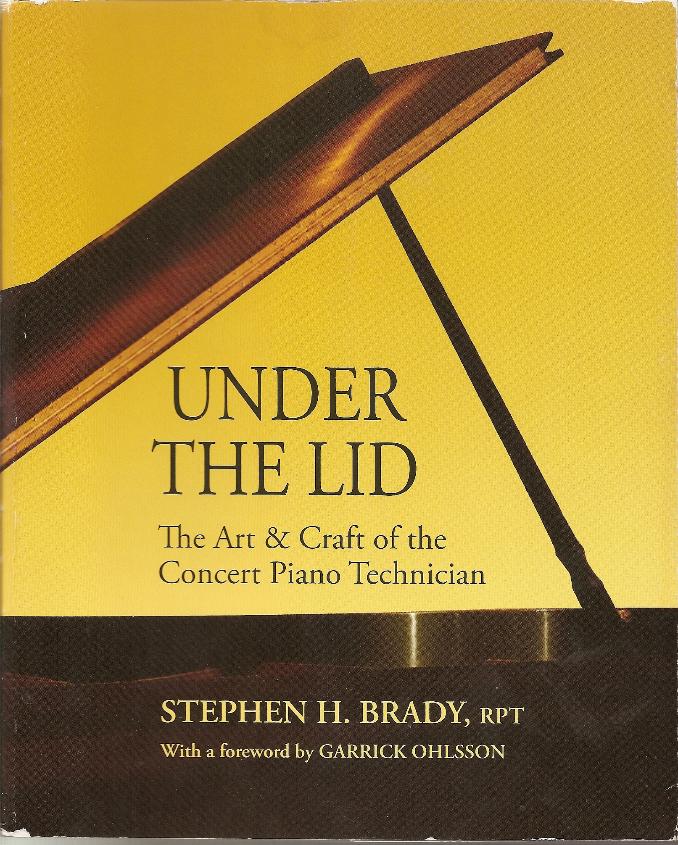
Under the Lid Stephen H Brady RPT
This book is just super. It covers lots of entirely practical hints and techniques that are of great value to the technician working on high-end pianos for concerts and recordings. The technical chapters are interspersed by informative and often amusing observations and experiences from pianists and others involved in recordings, piano preparation and so on. A most valuable and enjoyable work, taking up where Reblitz leaves off. Although it is largely technical, I think it would make enjoyable reading for any dedicated pianist.
There is a new edition of this text, and the one shown above is no longer available from Amazon. The new edition can be purchased in the USA via Steve Brady's website, Under the Lid - Brady Piano Services (stevebradypiano.com)
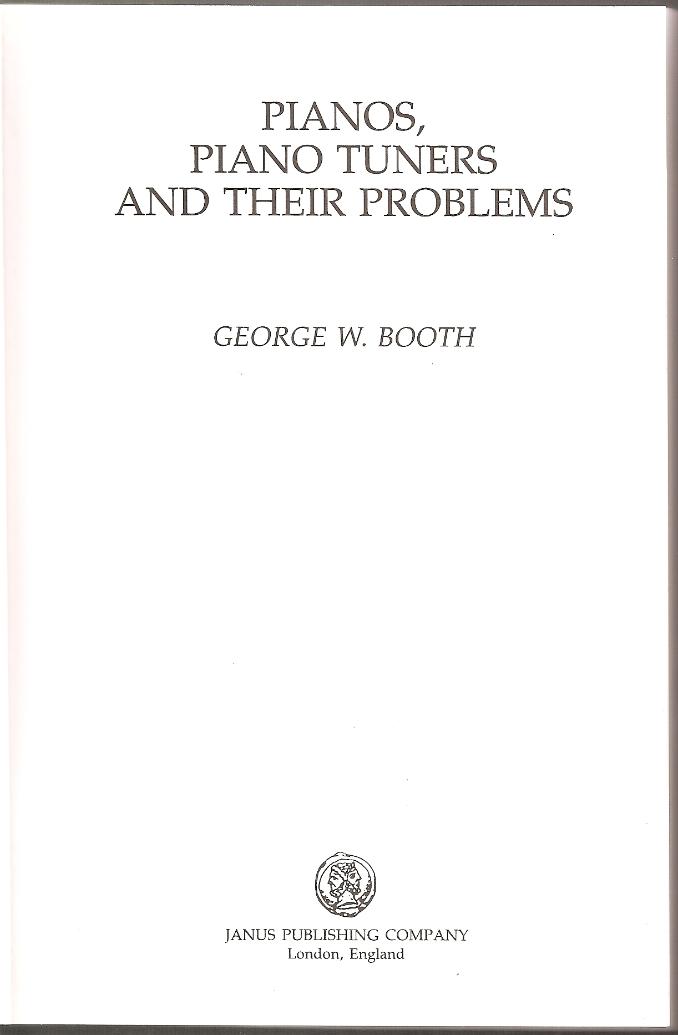
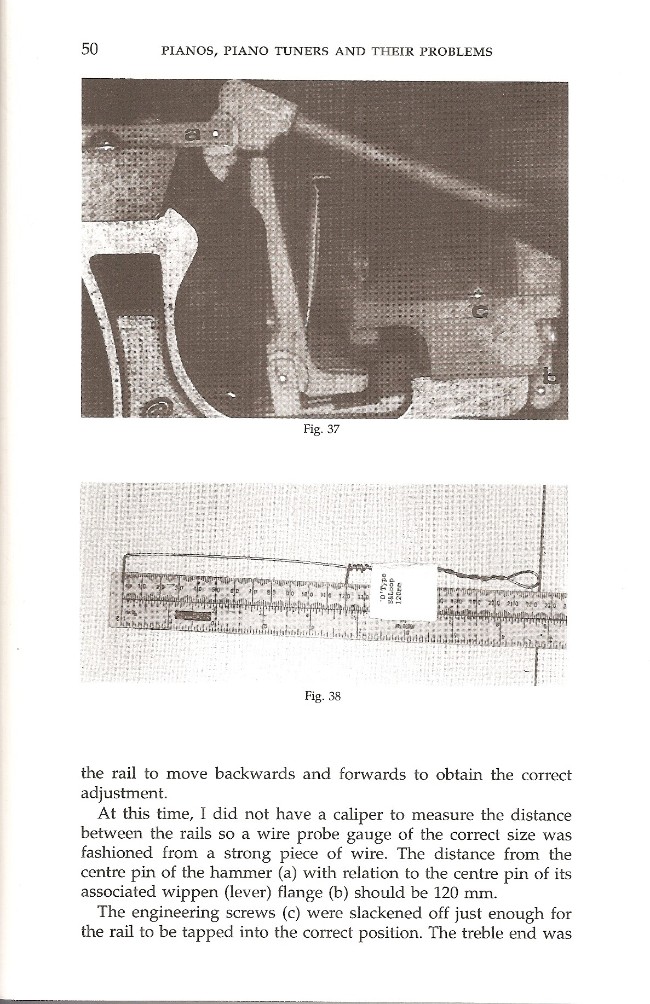
Pianos, Piano Tuners and their Problems G. Booth, Janus Publishing 1996
A collection of observations, techniques and anecdotes by a retired UK piano technician. Mr. Booth is to be congratulated on making a photographic record of so many piano things, before the advent of digital photography. The chapter on regulating the D-type Spring & Loop action that's found in many small English grand pianos is very worthwhile, as not many books cover this (Dr. Capleton's regulating book, see further up this page, is the only other I know of). Out of print now.
Second-hand only

Professional Piano Tuning Dean Howell APSCO, 1969
A 1969 text by a leading light in the American Piano Technicians Guild, this offers a useful update to W. B White's 1940s book. Good information, but a bit dated now.
Second-hand only

The Piano Handbook Ian McCombie, Scribner 1981
This 1981 text by a Canadian technician is quite well-illustrated and covers various repair topics in a practical way. It's not the most comprehensive text available, but still a good addition to the bookshelf.
Second-hand only
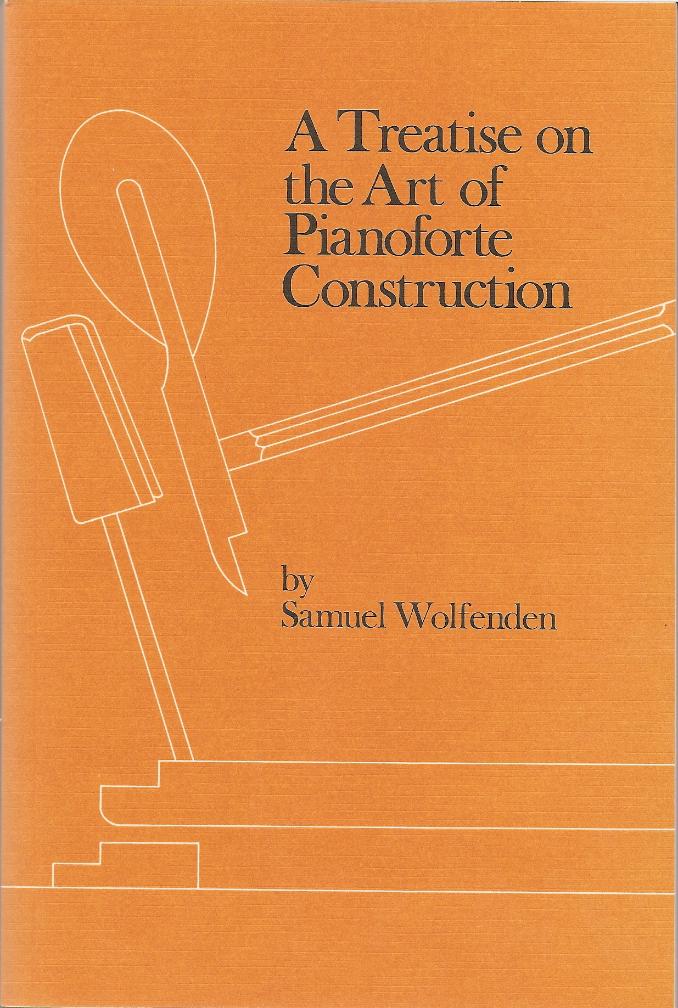
A Treatise on the Art of Pianoforte Construction Samuel Wolfenden, 1916 Republished by Heckscher & Co Ltd 1989.
This is a historical text, maybe better included in the historical piano books page to follow, but it is in fact a technical book by a leading figure in the UK piano industry at the start of the 20th Century (when the industry was at its zenith). No previous book had covered all this technical information about scale design and piano construction. It isn't a 'how-to' text in terms of today's manufacturing technology. But the design factors it deals with are still relevant. Credit is due to Heckschers for keeping this title in print.
A Treatise on the Art of Pianoforte Construction

The Craft of Piano Tuning Daniel Levitan The Soundboard Press 2011
A superb text. Since the days of W.B White's once-standard Piano Tuning and Allied Arts of 1946, understanding about tuning and the behaviour of piano strings has advanced considerably. This work represents a carefully considered and well explained approach. The beautifully clear technical illustrations and charts are very helpful in understanding inharmonicity and the forces in the tuning lever.
Unsure if still in print.
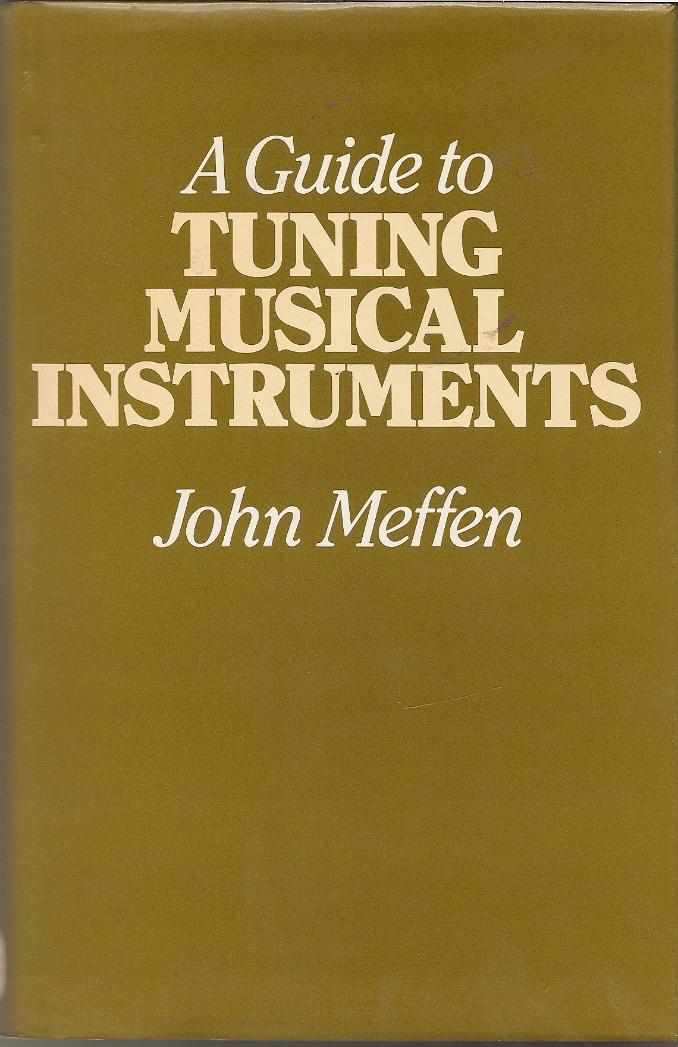
A Guide to Tuning Musical Instruments John Meffen David & Charles 1982
This is a handy work for piano tuners, not because of its coverage on piano tuning - there are plenty of other books about that - but because of its general discussion of tuning and temperament and the information it includes about the tuning of other musical instruments. Dr. Meffen was a Principal Lecturer in music and his explanations are very good.
Second-hand only
